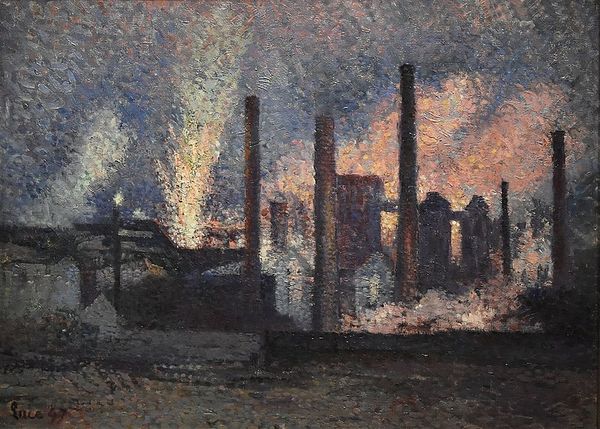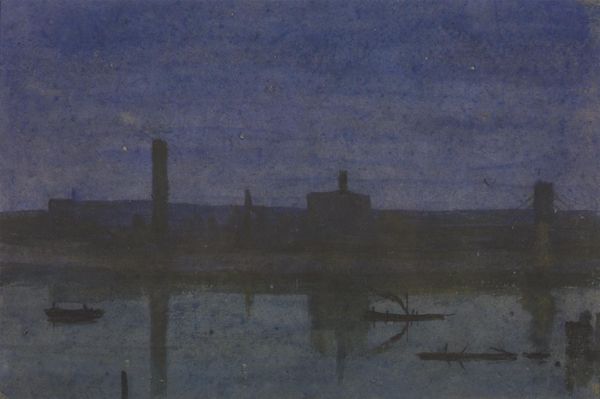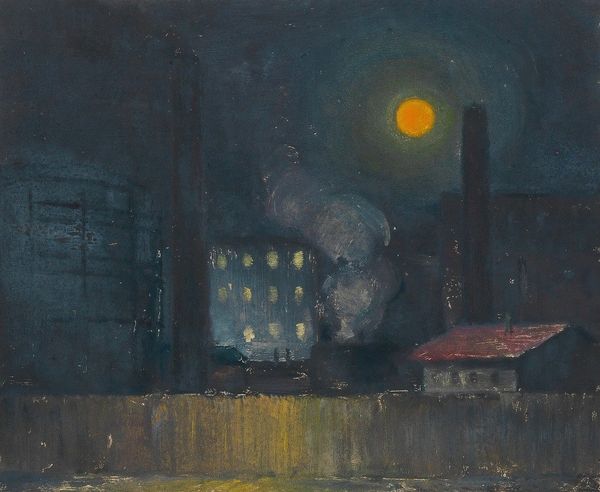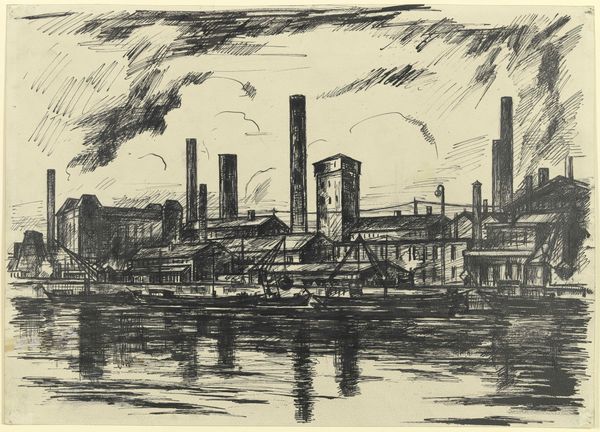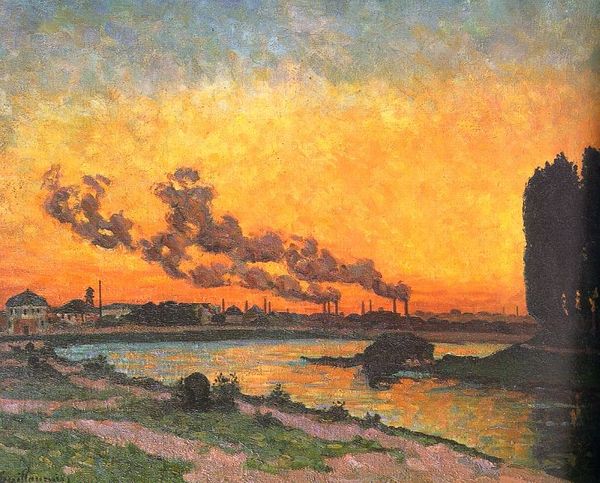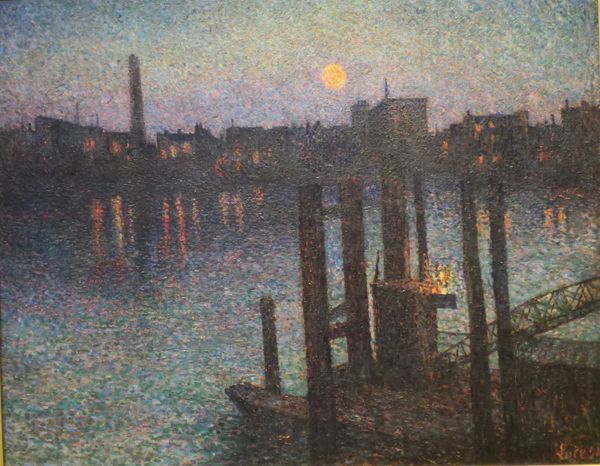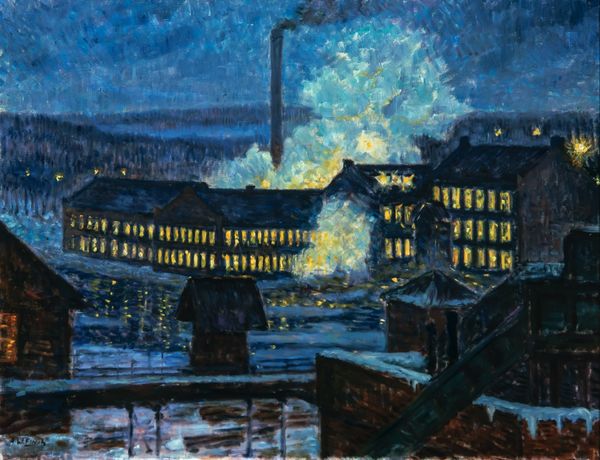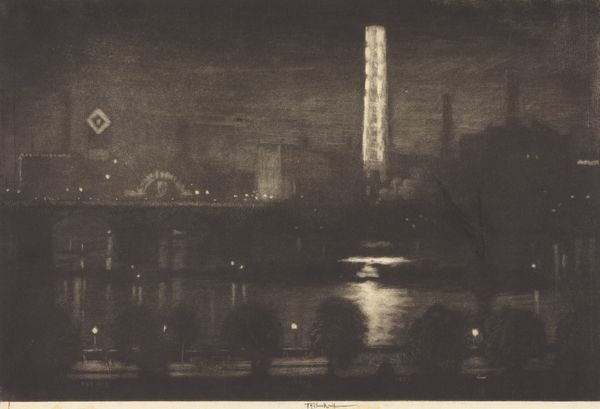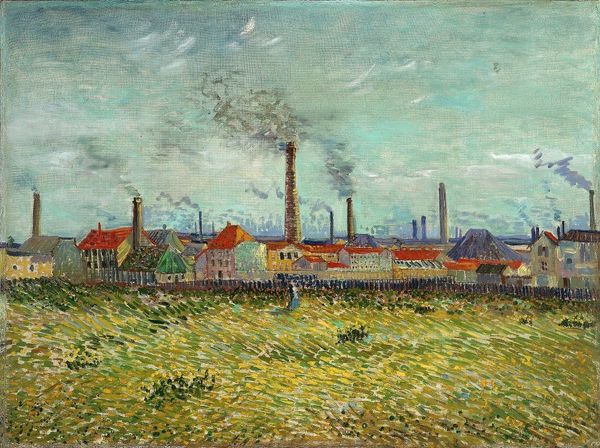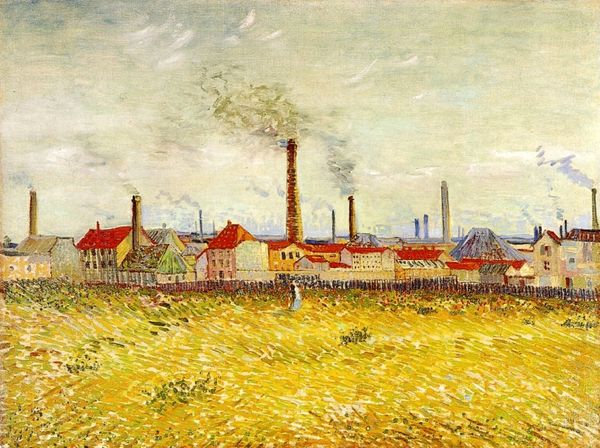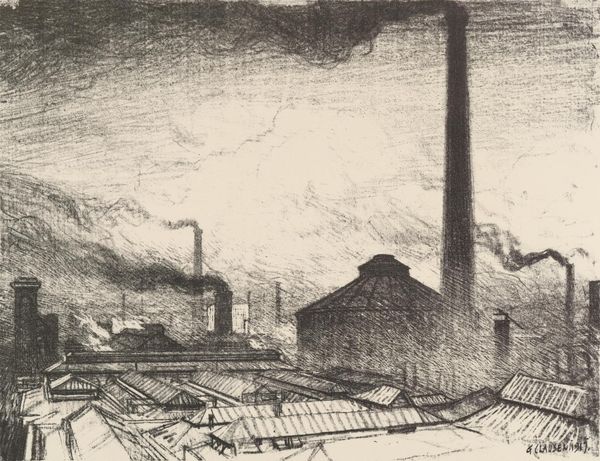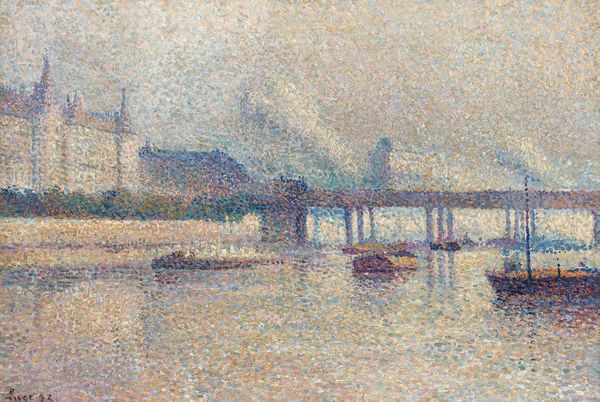
Copyright: Public domain
Editor: So, this is Maximilien Luce’s "Factory in the Moonlight," painted in 1898. It’s an oil painting that depicts a factory at night. The palette is mostly blues and browns, and the overall feeling is…melancholy, but maybe also a little romantic with the moonlight. What stands out to you most about it? Curator: It’s the tension between the romanticism you mention and the harsh realities of industrial labor. Luce was an anarchist, deeply invested in the plight of the working class. This wasn’t just a pretty picture; it was a commentary. Consider the implications of painting this factory under moonlight – what’s illuminated, and what remains in shadow? Editor: That’s interesting. I hadn’t thought about the symbolism of the light itself. It romanticizes the factory…but also casts long shadows. Was Luce trying to critique the glorification of industry? Curator: Exactly! Think about who benefits from this "progress" versus who pays the price. Luce's pointillist technique, while seemingly beautiful, also subtly emphasizes the fragmentation of labor, the way individual workers are reduced to tiny, almost interchangeable parts within a larger, impersonal system. What effect does that realization have on your initial interpretation? Editor: It completely reframes it. The melancholy isn’t just about a dark landscape; it’s about the human cost of industrialization. The moonlight feels less romantic now, more like a deceptive mask. Curator: Precisely. Luce compels us to confront uncomfortable truths about power, exploitation, and the complex relationship between aesthetics and politics. Editor: I see this painting in a new light now – literally and figuratively. It’s much more than just a pretty picture; it’s a statement. Curator: It's a powerful reminder that art can be a tool for social commentary, challenging us to question the narratives we’re presented with.
Comments
No comments
Be the first to comment and join the conversation on the ultimate creative platform.
